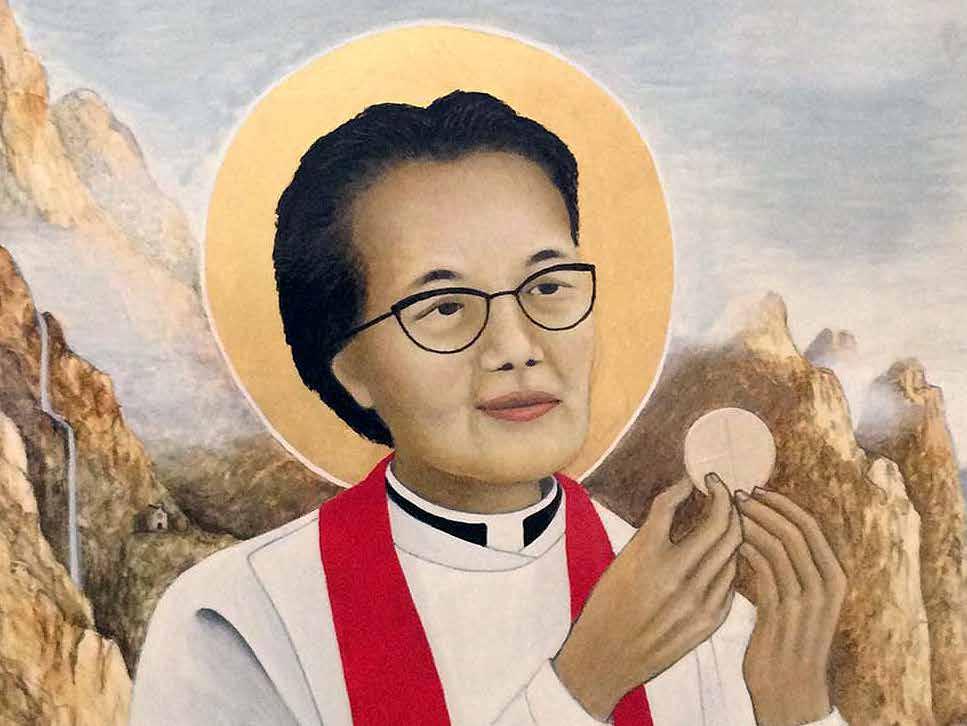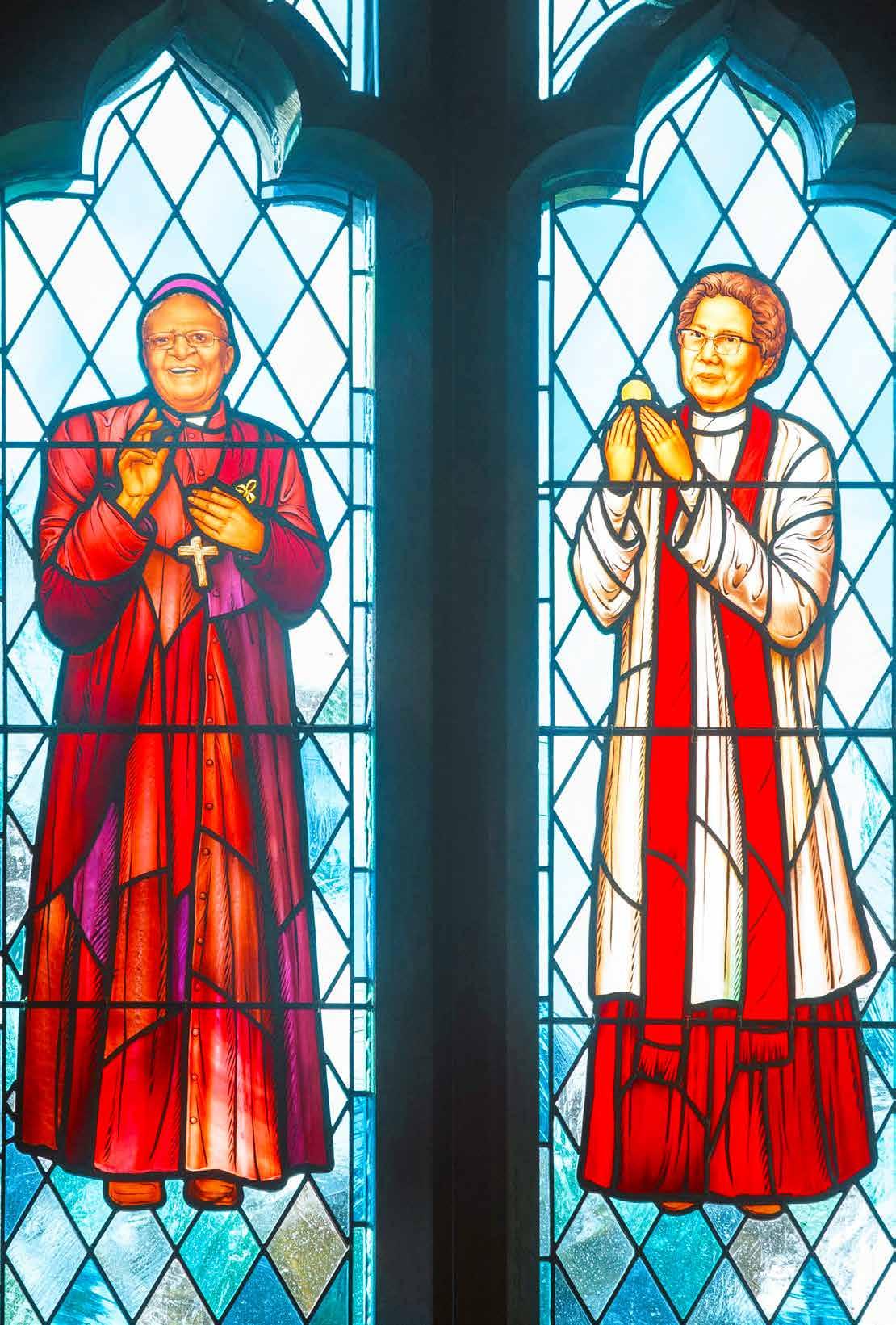
6 minute read
The Ordination of and Ministry of Li Tim Oi
from USPG Koinonia Issue 5 2/2021
by USPG
THE ORDINATION AND MINISTRY OF LI TIM OI
By Philip L Wickeri
Photos: Christina Rees of the Li Tim Oi Foundation.

The ordination to the priesthood of Florence Li Tim Oi (1907-1992) in 1944 was an extraordinary event. She became the first woman priest in the Anglican Communion, and her ordination was controversial from its inception. Whilst Li Tim Oi was not the first apparently ordained woman in China, she may have been the first in a main-line denomination and she became an icon in the movement for the ordination of women in the Anglican Communion from the 1970s. Importantly, she was certainly the first in a church that maintained the apostolic succession and the historic episcopacy. We should remember Li Tim Oi herself, because her pioneering role and the context in which she ministered, are often neglected in the interpretation of her priesthood. The ordination of Li Tim Oi was a significant event in the process leading to the ordination of women in the Anglican Communion. The Chung Hua Sheng Kung Hui (CHSKH) - the Anglican Church in China at this time - was, by the 1920s, ahead of the Church of England in its thinking about women in ministry. In China, women were permitted to lead prayer, and deaconesses could preach and assist in the sacraments at church services. It may have been that the Chinese churches were short of priests and lay leaders, and so they were forced by circumstances beyond their control to give women more authority and responsibility. Li Tim Oi grew up in an Anglican family. She graduated from secondary school in 1934 and later worked at a primary school for the children of those who fished for a living. She began a full course of study at Union Theological College and received her diploma in 1938. By 1940, Bishop Mok (sic) decided to put her in
29 I
ISSUE 5 3/2021
CELEBRATING 50 YEARS OF WOMEN IN ORDAINED MINISTRY
charge of the congregation in Macau. This was a big responsibility because she would be the only Anglican pastor in the territory and in the immediate vicinity of Guangdong. After a year, Bishop Mok suggested that she be made a deaconess. She was ordained by Bishop Hall through the laying on of hands at St. John’s Cathedral, Hong Kong on Ascension Day. By 1941, Macau was a city teeming with refugees and people from all over China and many parts of the world. Li Tim Oi served this parish from 1940 to the end of 1946. As a deaconess, she conducted services for a growing congregation that included Chinese, Westerners, and Eurasians, most of them displaced people. She also worked with refugees, did evangelistic and educational work with young people, and sought government help in purchasing rice for needy parish members. In the words of one biographer, “She was a priest in all but name.” By everyone’s account, she was warmly received and strongly supported by the parish members in Macau, who apparently had no difficulty accepting a woman in ministry. Li Tim Oi did not put herself forward for ordination. She was told that she would be ordained. It became close to impossible for priests for Hong Kong to go to Macau with the fall of Hong Kong in December 1941. The inability to have regular Eucharistic services for the Anglican parish at Morrison Chapel, Macau became an immediate factor in the move by Bishop Hall to ordain Li Tim Oi. After her ordination to the priesthood, Bishop Hall spoke of the immediate context of her ordination in in May 1946. He said, “It was on his last journey through Macau to the interior that Bishop Mok authorized Pastor Lee Tim Oi to celebrate the Lord’s supper. When I later ordained her to the priesthood, I was confirming what Bishop Mok had begun. I do not think that we need to be surprised that the ordination of women to the ministry of our Church should come first in China; nor surprised that it should be a Cantonese bishop, caring for the spiritual needs of the Cantonese people, who took the first step… “ Opposition to Bishop Hall’s action in ordaining a woman priest continued and grew and was ultimately discussed at a meeting of the CHSKH House of Bishops in Shanghai in in February 1946. After considerable debate, the bishops voted to repudiate Hall’s decision, although at least four Chinese bishops stood with him. Li Tim Oi later agreed to resign in writing to Bishop Hall stating: “According to the rule of the Anglican Church that there is no women can become an ordained priest, I think it is right time for me to resign, especially the war is over now. Actually, it is an old church prejudice… Anyhow, this new rule can be passed sooner or later because women’ movement becomes more active than before.” On Ascension Day, five years after she became deaconess and some two years and four months after she was ordained priest, Li celebrated her last Eucharist at Morrison Chapel. Later that summer, Li wrote: “The Bishop came to Macau and explained to the congregation about the uncanonical of the ordination of a women as a priest. What a great shock to them! On the very day after the Bishop had gone back to Hong Kong, some of the congregation came to see me particularly to comfort me. Some of the lady Church members came to see me with a sore heart, with tears in their eyes and they raised so many questions. They said that when Christ was in the world, he was very kind to women. Why does the Church not carry out the spirit of Christ? What does the Church represent? Bishop Mok Shau Tsang’s licensing and Bishop Hall’s ordination of Li Tim Oi were courageous, prophetic and pastoral acts. Li Tim Oi has rightly been hailed as a forerunner in the movement for women’s ordination. Her spiritual and physical strength as a priest were evident in her work and in her retirement. She was humble in her ministry. She never asked to be ordained, as either a deacon or priest. Things were done to her, for this was the way in which she, as a woman, experienced the Anglican Church. Li Tim Oi’s suffering at the hands of the Church and its laws reflects the suffering of women in the Church through the ages. Florence Li Tim Oi reminds us that the person – and her community – are always more important than the institution or the office. Li Tim Oi had her priestly orders restored in 1971, when the Diocese of Hong Kong and Macau was the first in the Anglican Communion to allow the ordination of women to the priesthood. Li Tim Oi’s legacy is remembered in the work of the Li Tim-Oi Foundation (www.ltof.org.uk/) USPG is grateful to Philip L Wickeri for permission to publish edited extracts of his original article in Christian Women in Chinese Society, The Anglican Story. ■










